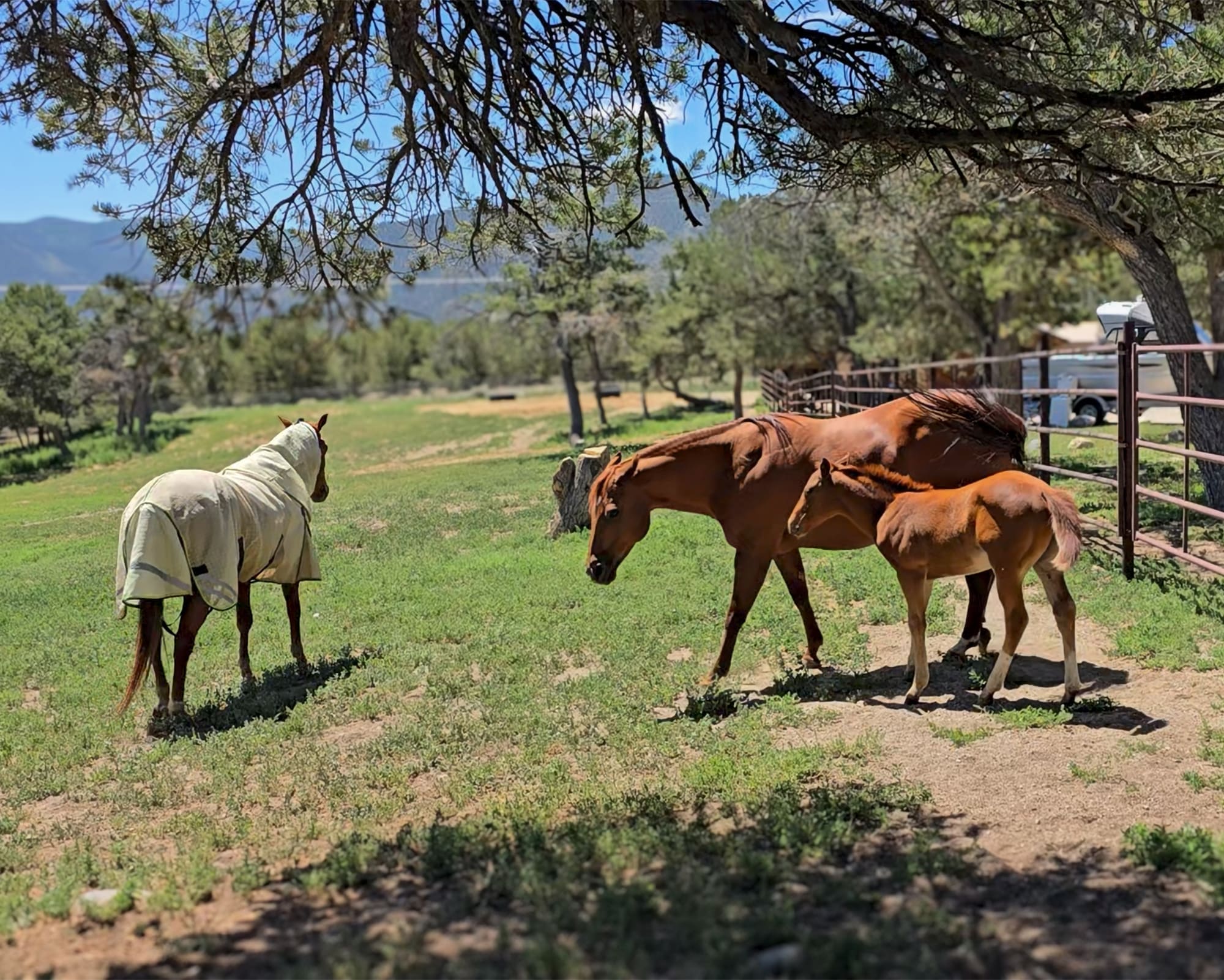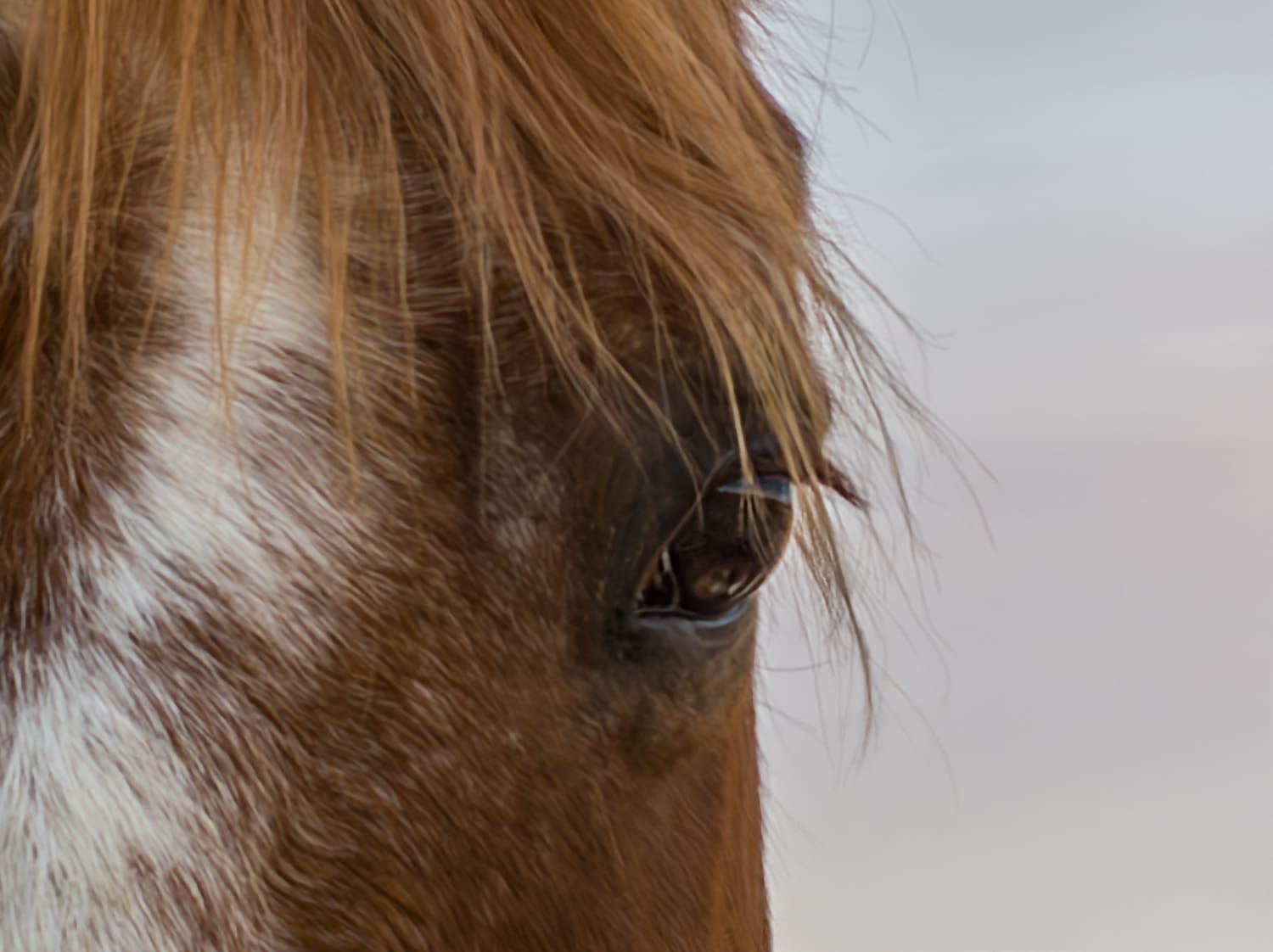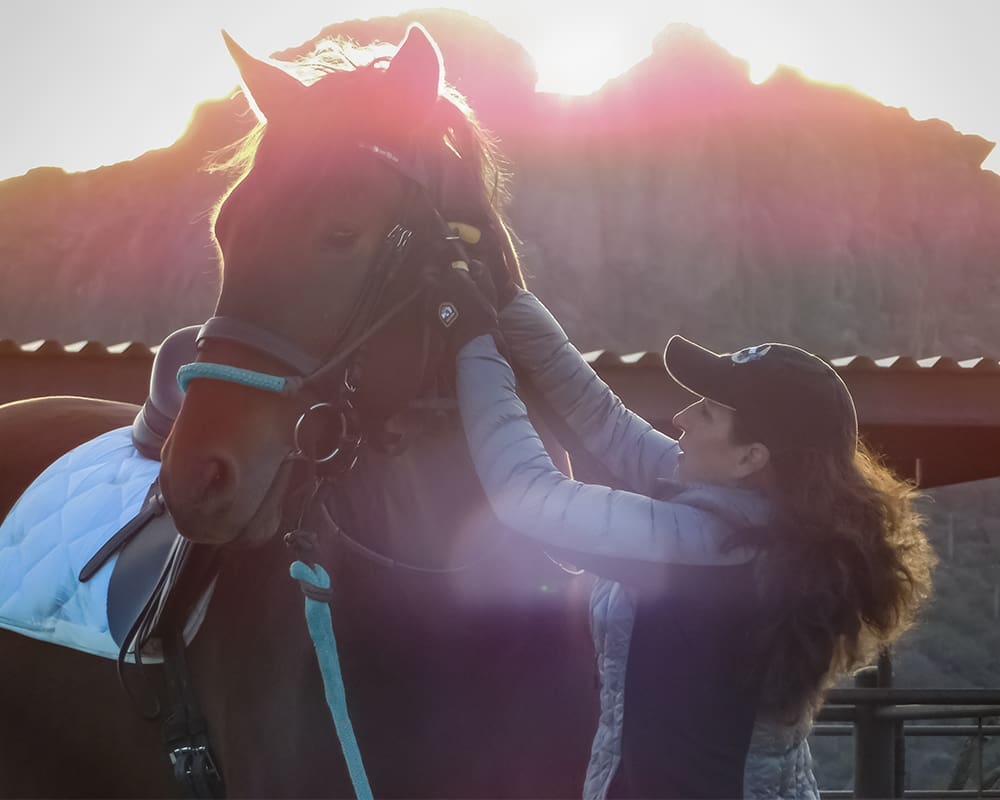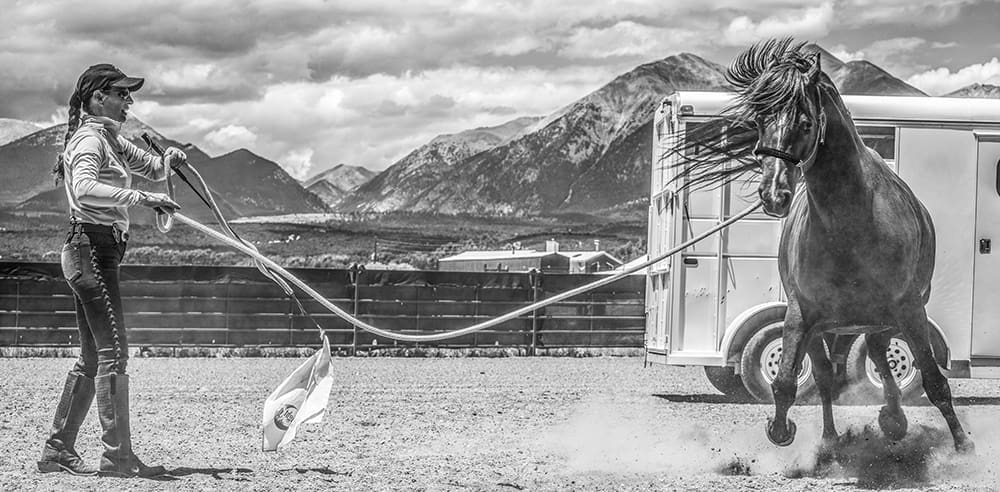This time of year, reflection and goal setting comes naturally. I’ve always been a big fan of making New Year’s resolutions and more often than not, I keep them. For me, the secret to keeping resolutions is to make them attainable—don’t set unrealistic goals.
I’ll admit that I am a goal-oriented person by nature—I love the sense of accomplishment. I’m a list maker, too, and at any point in time, I may have up to half a dozen different to-do lists scattered between my home, my office and my briefcase. Sometimes I even put things on my list that I have already done, just for the sheer satisfaction of crossing it off.
Here in the high mountains of Colorado, this time of year also means that it is too cold and/or too icy to ride outside. We are relegated to going round and round, day in and day out, in the indoor arena. It tends to focus my training on attaining specific goals with each of my horses. We’ll be stuck inside for about 90 days, which turns out is an ideal amount of time to attain a major training goal with a horse.
For horse training in general, 30 days will get a horse started on a certain course, 60 days is when you see real progress, but 90 days marks the point at which the skill is usually fully trained. When I was starting a lot of colts, we always hated the “30-day-wonder jobs” because we knew if we could just keep the colt for 90 days or more, he would be very solid and much more likely to get along with the owner.
So each winter, when we move indoors for 90 days or more, I like to set some short-term goals with my horses—things I can realistically accomplish in the time frame. Bigger goals that can be broken down into smaller steps, and a slow-steady progression in training. I like to have more than one goal to accomplish so that I am not pounding and drilling my horses on the same thing every day—the monotony of that, combined with the monotony of riding indoors, makes for sour attitudes.
Between my husband and I, we have seven horses. Two of them are old retirees, but the other five are working horses that get ridden about four times a week (fortunately I have a great staff to help me both when I am home and on the road). Although we have goals for all the horses, it is my two personal horses, Dually and Eddie, that I personally focus on the most. They are very different horses and therefore their goals are quite different too.
Dually is coming 14 (how can that be?) and is a finished bridle horse, meaning he is trained to the full curb bridle and riding one-handed—the Western equivalent of a high-level dressage horse. He’s a seasoned reined cowhorse, very light and responsive, and we’ve had plenty of time over the past eight winters to master various skills. He really doesn’t need more training, just maintenance to keep him sharp. For Dually, my goals have more to do with me than with him.
This year, I plan to ride Dually bareback all winter, aiming to ride a bridle-less/bareback reining pattern by the end of the winter. This will improve my balance and fitness a lot, plus help me refine my bridle-less cues. It’s been a few years since I had the winter goal to cut cows on Dually bareback. Then, I hadn’t ridden bareback in about 20 years and the first day, I thought I might fall off just trotting a straight line. By spring, I rode him bareback on the cutting machine at a pretty high speed. What a progression!
My biggest goal in riding Dually bareback this winter is for my own balance and fitness. I’m 54 years old and although I’ve been a professional rider all my life, I’ve noticed a decrease in my balance over time. That’s a normal part of aging, dammit. But the good news is that balance is a skill that can always be improved through balance-challenging exercise. My balance is pretty good in the saddle; to really challenge my balance, I have to take it away.
This goal will also be good for Dually and give us a nice progression of challenges. Right now I just want to get re-acclimated to riding bareback and strengthening my muscles and balance, so for now, I’m just working at the walk-trot-canter on circles and transitions. In another few weeks, I’ll start adding reining maneuvers (with the bridle on) to my workouts. Then later we’ll work on those same maneuvers without the bridle. I’ve already done a lot of bridle-less reining with Dually, but always with the saddle. So again, this will be more of a challenge for me than Dually, but will definitely help me refine my cues and be a better rider.
Eddie is my young horse and an entirely different animal than Dually, which is reflected in my goals for him. He’ll be five this year and he is really coming into his own both physically and training-wise. With Eddie, it wasn’t so much the challenge of coming up with more training goals, but more a matter of keeping it down to a reasonable level.
My long-term goals with Eddie are to develop him into a versatile ranch horse for competition. That is what he is bred for and where his greatest potential lies. I’m not sure I’ll ever have the time to show him but I’d really like to develop his potential, even if it is for someone else to show. He had 90 days (there’s that magic number again) of cow work in 2013 and we worked hard over the last year to develop his lightness, collection and reining maneuvers, as well as other ranch horse skills. He’s nearly ready to make his debut on the show scene– it’s just a matter of putting it all together.
My short-term winter goals for Eddie include perfecting his flying lead changes and roll-backs, developing more slide in his stop, increase the one-handed riding and see if he has any potential as a bridle-less horse. By the end of the winter, I expect to be riding a complete reining pattern one-handed and I hope to be able to take the bridle off for some basic work at the walk, trot and canter.
I believe very strongly in slow and steady progress on my horses—not cramming and jamming. With a 90-day schedule ahead of me, it’s easier to be patient. I also think it is important, particularly in the arena, to do a variety of things with my horses, to keep their attitudes fresh and to avoid monotony. I try to use a variety of exercises that break skills down; I try not to work on the same things every day so that my horses don’t get bored or anticipatory.
Both of my horses have an extreme amount of “try” in them and I work hard to preserve this most valuable characteristic. I pay close attention to when they try hard and when they are slacking and I make sure I reward the try with praise and rest. I also dissuade the slacking-off by making them work harder and being a little more stern. Most importantly, when my horses try hard, I always notice it and shower them with copious praise; sometimes I even hop off and put them away.
Setting short-term and long-term goals with my horses helps me stay on a steady course of improvement and gives me the greatest sense of satisfaction. There’s nothing better than attaining a goal and then setting the bar higher. My horses and I can always get better—you can too! Just remember to keep your goals reasonable and give yourself plenty of time to accomplish them.
My horses help me be a better rider and a better person too. As I set my goals for my horses, I am also setting goals for myself too, because no matter how well-trained I am, I can always get better too. This year, my personal goals are to always assume positive intent in everyone around me, especially those closest to me (who sometimes get the short end of the stick); and to do more to give back to my community. How about you? Have you set your goals for your horses and yourself this year?
Please visit Goodnight’s sites for more information and training tips:



